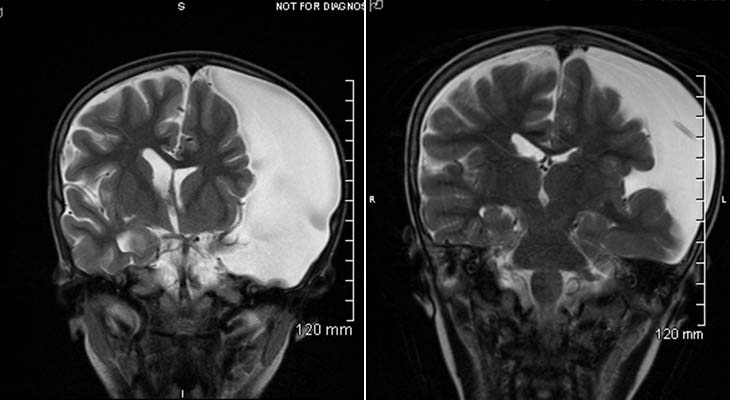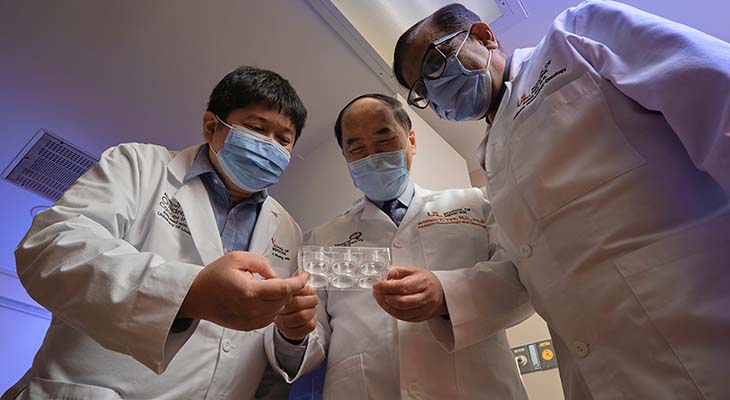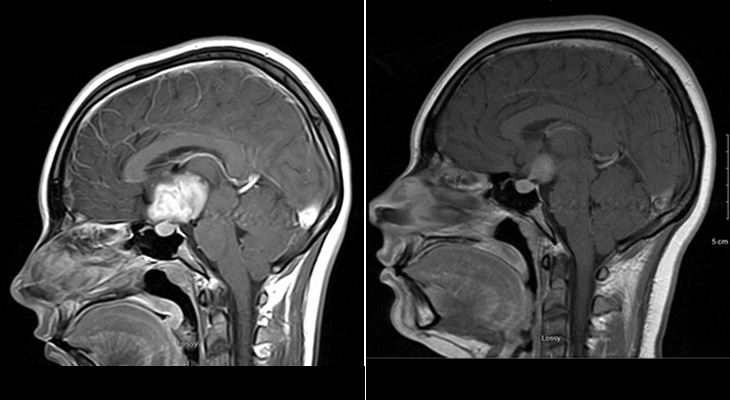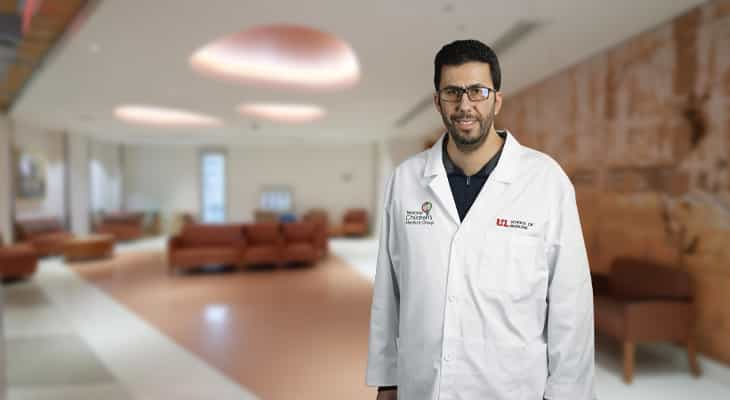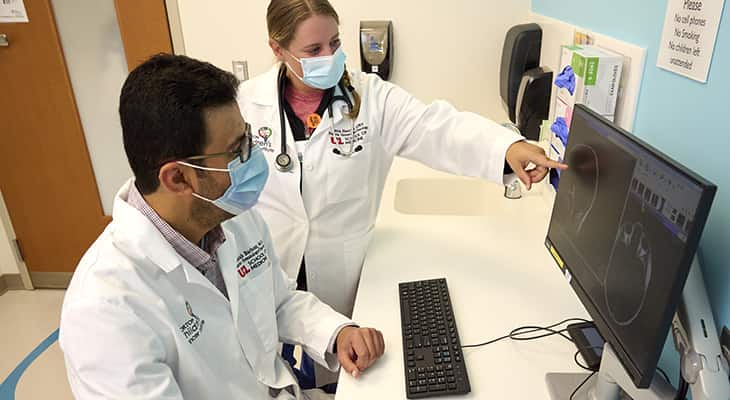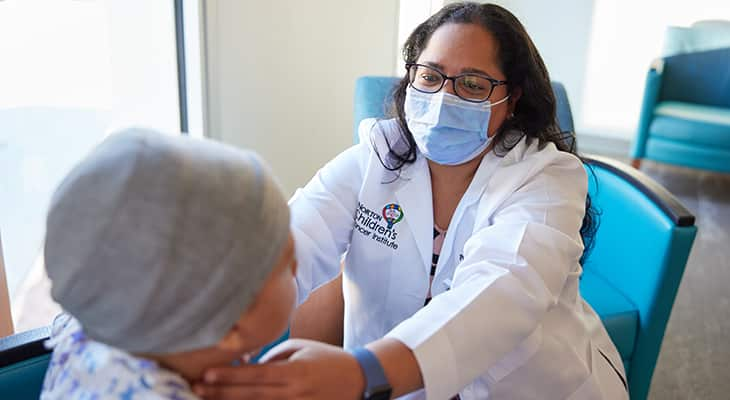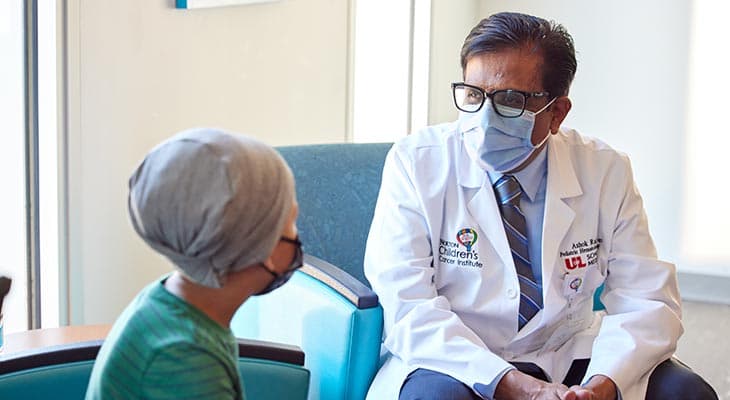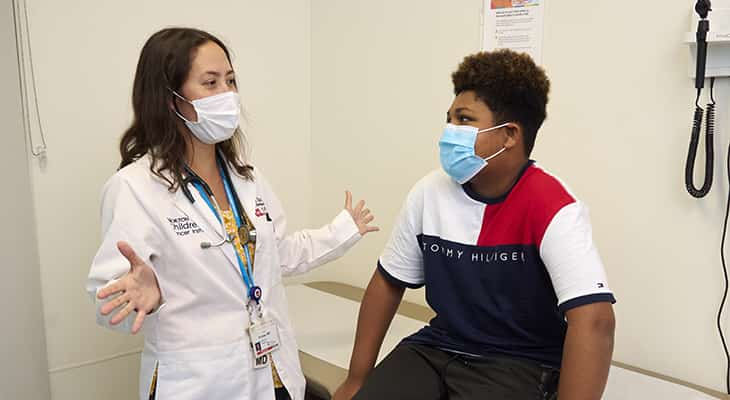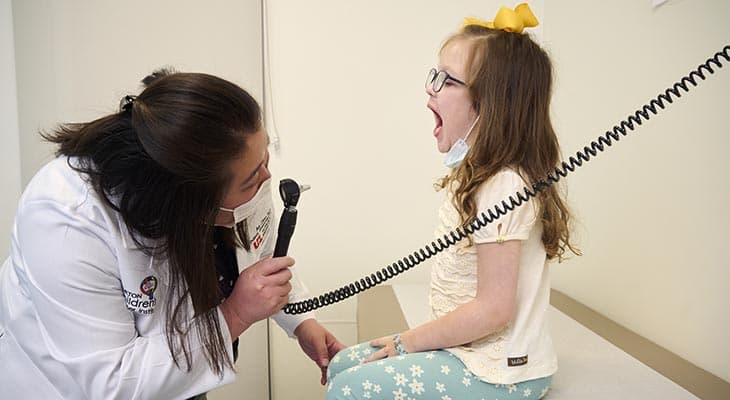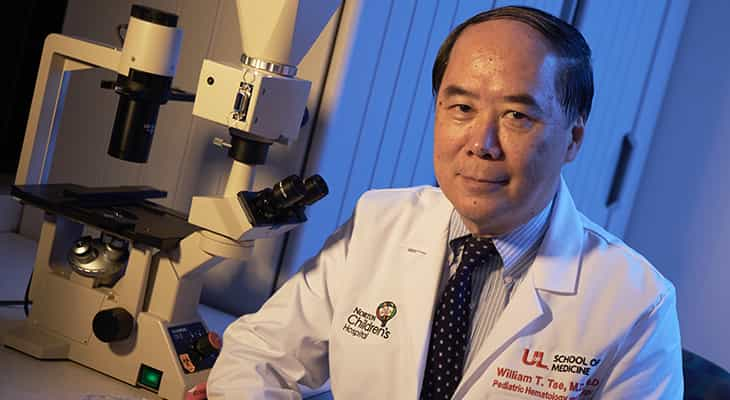DFMO medulloblastoma clinical trial examines drug’s effectiveness for high-risk cases
Researchers are recruiting pediatric medulloblastoma patients for a novel use of difluoromethylornithine (DFMO) to prevent relapse. The multisite study, sponsored by the Beat Childhood Cancer Consortium and led by Michael Angelo C. Huang, M.D., pediatric [...]
View moreWhen to refer a pediatric anemia patient
Infants and children can be prone to anemia for a variety of reasons throughout their first years of life and adolescence. Anemia can be caused by diet, blood loss or other health conditions. Signs and […]
View moreCase study: Shunt relieves pressure from arachnoid brain cyst, allowing boy to continue leukemia treatment
The patient A 4-year-old boy presented to the hospital with fever, fatigue and weakness. He also complained of blurry vision. He had recently had nose bleeds and oral bleeding. A complete blood count showed pancytopenia, [...]
View morePediatricians’ primer on childhood CNS tumors
Tumors in the central nervous system (CNS) account for 20% of childhood cancers, with 5.65 cases and 0.72 deaths per 100,000 children under 14 in the United States. Brain tumors are second only to acute […]
View moreMEK Inhibitor shrinks large hypothalamic enhancing tumor in teen
The patient A 14-year-old female presented with worsening headache and deterioration of vision especially in the left eye. MRI detected a large hypothalamic enhancing tumor causing mass effect on the optic nerves. The pituitary gland […]
View moreClassification and treatment of pediatric cancerous brain tumor, medulloblastoma
Medulloblastoma is one of the most common malignant brain tumors in children, with cases tending to surface around ages 4 or 5. Currently, the treatment protocol is resection of as much of the tumor as […]
View moreDiagnosing and treating brain tumors in children
There are many types and subtypes of brain tumors in children, and heterogeneity is common among tumors with similar morphology, according to Mustafa Barbour, M.D., pediatric hematologist/oncologist at Norton Children’s Cancer Institute, affiliated with the [...]
View moreThe acute lymphoblastic leukemia link to obesity
Survivors of the most common childhood cancer, acute lymphoblastic leukemia (ALL), need long-term monitoring for obesity and other ongoing health consequences of their disease and treatment. “The etiology of obesity among ALL survivors is not […]
View moreBurkitt lymphoma, one of the more common forms of non-Hodgkin lymphoma, has a variety of clinical presentations
Burkitt lymphoma, an aggressive subtype of non-Hodgkin lymphoma (NHL), accounts for 40% of all NHL cases in the United States. This high-grade, fast-growing form of lymphoma starts in the immune system’s B cells and has […]
View moreImmunotherapy for refractory B-cell acute lymphoblastic leukemia
The five-year survival rate for children and adolescents with acute lymphoblastic leukemia (ALL) has reached about 90% with chemotherapy. Clinicians increasingly are turning to immunotherapy for relapsed/refractory B-cell ALL (B-ALL). Immunotherapy harnesses the innate power [...]
View moreDon’t overlook these signs and symptoms of leukemia in children
Pediatricians can help with early detection of childhood leukemia during routine visits. Even though a patient’s signs and symptoms may appear vague, mild or suggestive of more common health conditions, they shouldn’t be ignored. In […]
View moreReduced-toxicity myeloablative conditioning regimen effective against high-risk pediatric leukemias
A low-toxicity myeloablative conditioning regimen is safe and effective in treating high-risk leukemias, particularly myeloid disease, according to a study recently published in the journal Pediatric Blood & Cancer. Conventional myeloablative conditioning is effective at […]
View more

